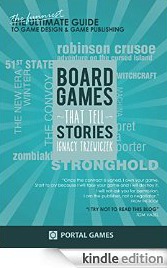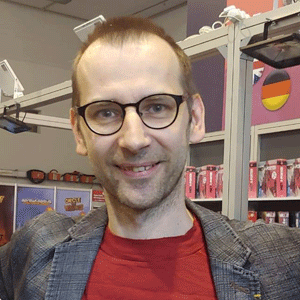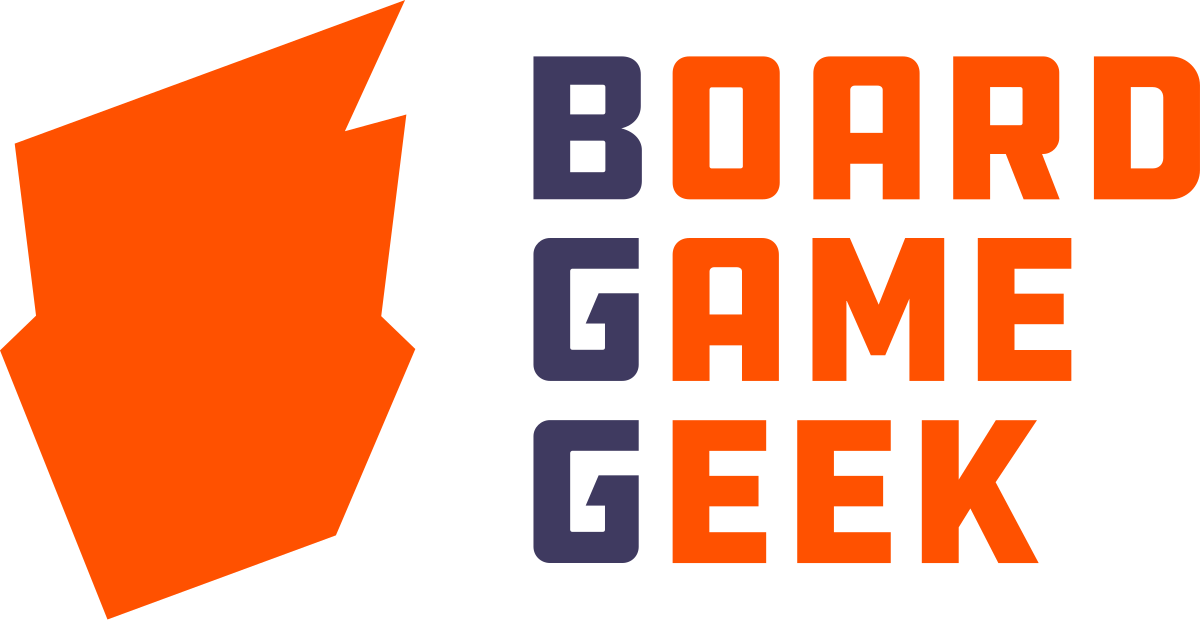That is question that I was asked on Twitter by RPG Edo this week. Answer is simple: it depends on the game. And it depends on the designer too. If we put in one line Stefan Feld, Ignacy Trzewiczek and Roberto Fraga and ask them this question, I bet that the answer would vary. Even if we put one guy, like me and ask this question, answer would vary too – there is not that much math behind Convoy but on the other hand there is hell of a math behind Pret-a-Porter.
So basically my answer would be something like: I don’t know, sir.
This answer sucks. So let me do what I can do best and share three short stories from my design history and math.
***
I could write plenty of funny articles about me designing Pret-a-Porter. One day I will. They would all gravitate around one simple subject – before I published PaP my reputation in Poland was more or less 'Polish Roberto Fraga’. Funny and crazy dude who plays all kinds of party games at every single convention he is at.
I do remember the very first time I brought Pret-a-Porter to convention for some testing. I asked my friends:
'Hey, I have economy strategy game to test. Would you help me?’
'Absolutely!’ Tycjan replied bursting in laugh. Ignacy and economy game prototype – this was hell of a joke!
Then I put a board on the table and began to explain rules. In a second Tycjan stopped laugh. And got this awkward impression on his face. You know, this kind of face that says: 'WTF?!’
Few years later he admitted that he was 200% sure I was going to show him my new party game prototype and I was only joking about economy and that for the whole test game he couldn’t believe what was actually happening. He couldn’t believe that I really designed economy game.
The truth is that foundations for Pret-a-Porter’s economy were built by my friend Rafal. I had the very first version of prototype prepared – everything ready to play, but without even a single number. No cost of cards, no cost of resources, no income, nothing. I knew exactly how the game should work, I knew flow of the game, I knew that these resources must be more expensive, these less, I knew everything. Everything, except the numbers.
So I asked Rafal to help me with numbers. He lives in Gdansk, 800 km away. He took train and visited me. We played one game of Pret-a-Porter without numbers, just imitating final flow of the game, role playing it and then he sat and in a few hours wrote numbers on every single component I had. Next day he took train and got back to Gdansk. And I spent next 8 months with my most trusted testers balancing the game and polishing those numbers. But if it is not Rafal giving me a good start…
How much maths used for designing Pret-a-Porter? Much, sir!
Do designer of Pret-a-Porter is some kind of MathGod? Not at all, sir!
***
Last year we published Legacy. This is medium weight and very thematic eurogame with cute funny pictures on cards. As me tweeter feed says many of you already played the game (thank you!) and those who haven’t yet… Well, pick your copy today!
When you play Legacy you got immersed by theme and you might not even realize how much math is involved in this design. Let me show you just a glimpse. There different nationalities – certain number of cards for each. There are different occupations – certain number of each. There are two main values on cards – Income received and Prestige received and new Cards received. There are also special skills – each of them must be somehow considered in terms of its value. And from these different values we need to calculate final cost of each card. And since this is a card game about creating combinations of cards – all these values have to be considered not separately – character with Prestige 3 is worth 9 points of balancing, but considered in pattern of all cards in the game – character with Prestige 3 nationality French, occupation Artist is more valuable than character with Prestige 3 nationality British, occupation Diplomat…
This is math I can’t do.
This is math I hire people to do.
I covered this in my article. And my MathGuy in Portal Games covered it in this article and in this. If you want to see his magic tricks, read those articles. You will see a lot of things from behind the scene.
How much maths used for designing Legacy? Hell of, sir!
Did Ignacy have any idea how to keep balance in the game after introducing all changes he wanted to do in the game? Not at all, sir.
***
New expansion for 51st State (called Ruins) is in print. Ruins expansion has 40 cards. There are cards with super new skills and abilities, all those cards players can’t wait to have in hands. But among those super cool cards, there are also boring ones. Disappointing ones. Cards that are nearly the same like cards from the base game. Did Ignacy have no new ideas and put crap into box? Really? I had this funny discussion with one of the testers. He asked:
'Those cards that give Fuel or Gun, they suck. I have plenty of those in base game. Do I need to buy expansion to have more of this crap?’
'Yes, you have.’
'Couldn’t you design something with new abilities?’
'Yes, I could.’
'So?’
'I put them, because you need them.’
Here is a thing. Behind these all cool cards there is a math. Take 51st State and check how many Iron icons you have in Contract section. Take The New Era and do the same. Take 51st State ad check how many Fuel icons you have in Contract section. Take The New Era and do the same. And Gun, and Brick… And Spoil section. And Action section…
It all has to match. Because when you play the game, you need to have well calculated and balanced chance to draw a card that gives you Iron. Or Fuel. Or Brick…
So if you buy Ruins and you add those 40 cards to the base game, it means that chances to draw this crappy and boring card that says: ’You receive 1 Fuel’ are lower. That’s why I need to add copy of this crappy, but very important card into the expansion. Expansion will add new abilities, new powers, but will also try to not blow balance of the whole set of cards.
How much maths used for designing Ruins? Well, not that much, sir.
Did Ignacy have any problems with that? No. This time he managed to do it by himself. Yay!


 I strongly believe that good board game is the one that tells a good story. You play it and suddenly you are sucked into it, you feel chills on the skin. Emotions grow. In a moment you defend castle. You hear roar of warriors. You smell boiling oil. You are into it.
That's how I design my games. I always want to tell a good story. I want players to be into it. As deep as possible.
I strongly believe that good board game is the one that tells a good story. You play it and suddenly you are sucked into it, you feel chills on the skin. Emotions grow. In a moment you defend castle. You hear roar of warriors. You smell boiling oil. You are into it.
That's how I design my games. I always want to tell a good story. I want players to be into it. As deep as possible.



